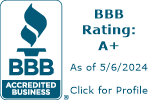We’re sharing an article originally posted on the Ohio College Savings Program’s website about eligible and ineligible college 529 plan expenses.
All parents have big dreams for their children and most of these plans include a higher education. Forward-thinking parents prepare for child’s future college costs by contributing to a 529 college savings plan. 529 accounts are an excellent alternative to student loan debt.
Ohio’s 529 College Savings Program, CollegeAdvantage, is a great, tax-advantaged plan to save for those future higher education expenses.
First, earnings are tax-free. This means that all 529 earnings are yours to use to cover qualified costs. Second, residents of Ohio will receive a deduction on their state tax income for their contributions to CollegeAdvantage 529 plans. Third, funds withdrawn from a 529 account to cover qualified higher education expenses are not taxed at the federal or state level.
What can you pay for tax-free with a 529 plan? Many qualified higher education expenses, which are the required costs to attend an accredited education institute to earn a two-year, four-year, graduate or professional degree.
529 plan qualified higher education expenses
-
- Tuition;
- Room and board during any academic period in which the 529 beneficiary is enrolled for at least half of the full-time academic workload according to the eligible education institution;
- Mandatory fees;
- Computer equipment and related technology as well as internet services;
- Books, supplies and equipment related to enrollment and class schedule; and
- Certain expenses for a special-needs student;
- Qualified apprenticeships costs such as fees, textbooks, supplies, and equipment like required trade tools. The apprenticeship program must be registered with the Secretary of Labor’s National Apprenticeships Act in order to use a 529 plan withdrawal. Interested parties can check the U.S. Labor Department’s search tool to confirm that a program is registered, and therefore, eligible for a 529 withdrawal; and
- Payment of the principal and interest on qualified education loans for the 529 beneficiary or the beneficiary’s siblings. The loan repayment provision applies to repayments up to $10,000 per beneficiary. The $10,000 is a lifetime amount, not an annual limit.
- Payment of K-12 tuition up to $10,000 per student, per year, for enrollment at public, private, or religious elementary or secondary school. 529 distributions to pay for K-12 tuition is limited to $10,000 per year. Consult your qualified tax advisor for specific information.
Room and board costs can also include rent for off-campus residency —including apartment, homes, and Greek fraternities and sororities houses — and groceries (non-taxable items only), provided these costs are equal or less than the same room and board allowances from the accredited education institution.
What makes a higher education expense qualified? If the cost is required for enrollment or attendance at a post-secondary educational institute, then it will mostly like be considered a qualified higher education expense. Tuition is a mandatory expense. Books, fees and supplies which are required for classes are considered necessary costs. Room and board — whether the 529 college savings account beneficiary is living on or off campus — is a qualified expense.
These qualified expenses aren’t only for traditional four-year colleges and universities. These required costs are also qualified for two-year community colleges, trade or vocational schools, certificate programs, graduate schools, or apprenticeships.
Again, when you are making a withdrawal from your 529 college saving account, it will be tax-free as long as you are paying for qualified higher education expenses.
What are some college costs that aren’t considered qualified higher education expenses? Here are a few:
Non-qualified higher education expenses
-
- Transportation costs to and from the school;
- Insurance;
- Fees and equipment which are not required for enrollment,;
- Parking tickets;
- Restaurants and taxable food items; and
- Library fines;
Making a tax-free 529 withdrawal
To pay for 529-qualified costs, there are different manners to make a withdrawal from a college savings plan.
The quickest and easiest will be online withdrawal request from a 529 plan to a bank account to pay to the higher learning institution with an electronic transfer to the account owners’ bank account. Or the account owner can pay with a paper check once the 529 withdrawal has been deposited in their bank account. Additionally, the account owner can have the 529 plan provider issue a paper check directly to the post-secondary education institution.
To learn more about making a withdrawal from a CollegeAdvantage Direct 529 plan account, this blog will give you pointers on best practices and a step-by-step guidance. Ohio’s 529 Saving Plan also has an article that offers tips on how to reimburse yourself from a 529 account for other qualified higher education expenses, such as paying rent for off-campus apartment.
As a general rule, account owners should take the 529 withdrawal within the same calendar year that the 529-qualified higher education expense has occurred. For tax purposes, the burden of proof for qualified expenses and withdrawals to pay them is on the account owner. Please retain all documentation of the qualified higher education expenses and the subsequent reimbursement or payment from a 529 plan. For guidance on how to avoid mistakes when making a 529 withdrawal, review this article.
Use Ohio 529 with scholarships
If you’ve been saving for your child’s future college costs in a 529 plan, your Ohio 529 account is made to work with scholarships. First, make sure that the post-secondary school that has offered your student a scholarship has a federal school code with the U.S. Department of Education. If it does, then your 529 plan will cover qualified expenses there. Here are your options on how to use your Ohio 529 college savings plan with scholarships.
If the offered scholarship isn’t a full ride, your 529 plan can help to pay for the rest of the costs like tuition, room & board, mandatory fees, books, supplies, computers and related equipment and services. 529-qualified withdrawals are not subject to federal or state income taxes. As the account owner, make sure to retain all documents of your 529 plan expenses and withdrawals. You have the burden of proof for tax purposes.
Let’s say that the offered scholarship does cover all of your student’s higher education expenses, then you can also hold onto the 529 account to use if your child decides to pursue dental, law, medical, or other graduate school options.
You also have the option to transfer the 529 funds to another beneficiary who is related to your child — including siblings, stepsiblings, parents, stepparents, cousins, grandparents, nieces and nephews — to avoid tax penalties. If you are thinking about continuing your own higher education, you can make yourself the new beneficiary of the college savings account. Also, there are no time limits on when you must use the funds saved in an Ohio 529 plan so you can keep saving in it for your grandchildren’s future college costs.
Another alternative is to withdrawal the exact amount of the scholarship from the 529 plan. As a non-qualified withdrawal, the earnings portion of the withdrawal will be subject to federal and state taxes. Usually, a non-qualified withdrawal would also be subject to a 10% federal tax penalty. However, there are three exemptions for 529 plans, with one being for receiving a scholarship.
529s and financial aid
Starting October 1, families with children getting ready to start or continuing their higher education can begin to fill out the Free Application for Federal Student Aid (FAFSA). FAFSA will determine how much financial aid your child may receive. The form will require you to list assets you have, which will include your Ohio 529 college savings account. The good news is the maximum that your 529 account will counted is up to 5.64% of the total. Let’s say you have saved $10,000 in your Ohio’s 529 Plan; then only up to $564 will be included on FAFSA. And wouldn’t you rather have the $10,000 saved for college than miss out on $564 worth of financial aid based on the 529 asset.
If you have a 529 account, keep on saving for college. The funds you’re investing today to cover their future higher education is an investment in your child. And remember, your 529 plan will have a minimal effect on their chances of receiving federal financial aid.
If you haven’t started saving, visit Ohio’s 529 Plan online to start saving today for your child’s future education. Every dollar saved today in a 529 plan is a dollar that doesn’t have to be borrowed later. A 529 account can be used for whatever comes after high school. Learn, plan and start an Ohio 529 Plan today at CollegeAdvantage.com.
This article was originally posted in March 2017 and has been updated to reflect new information for 2021.







